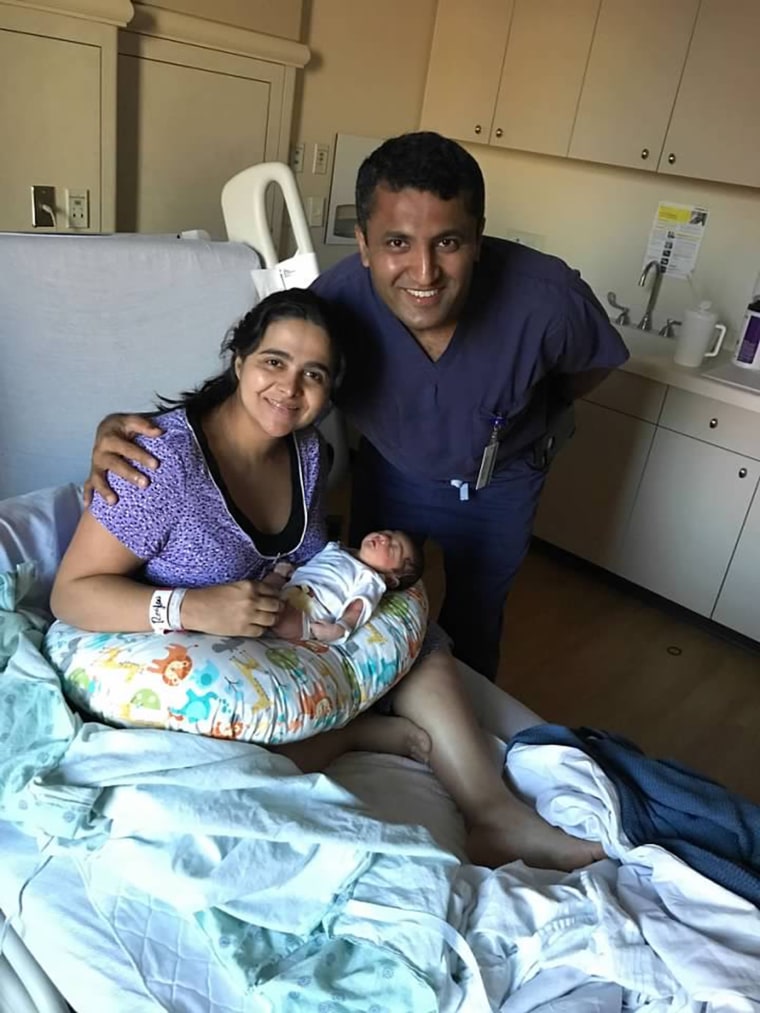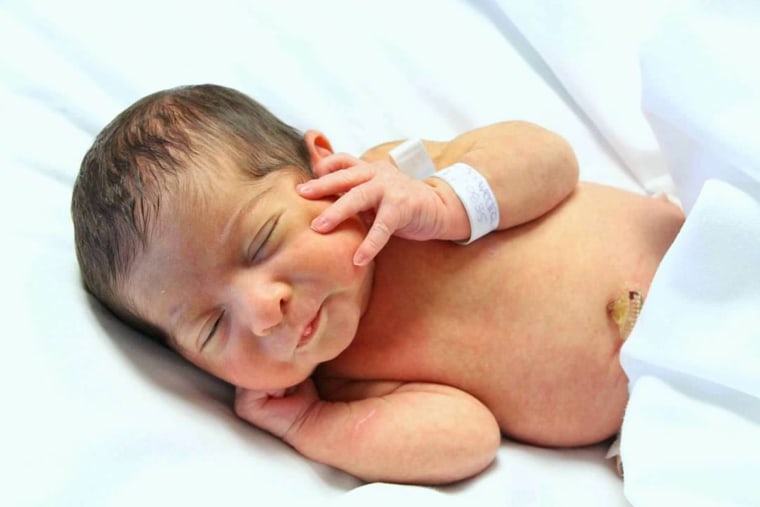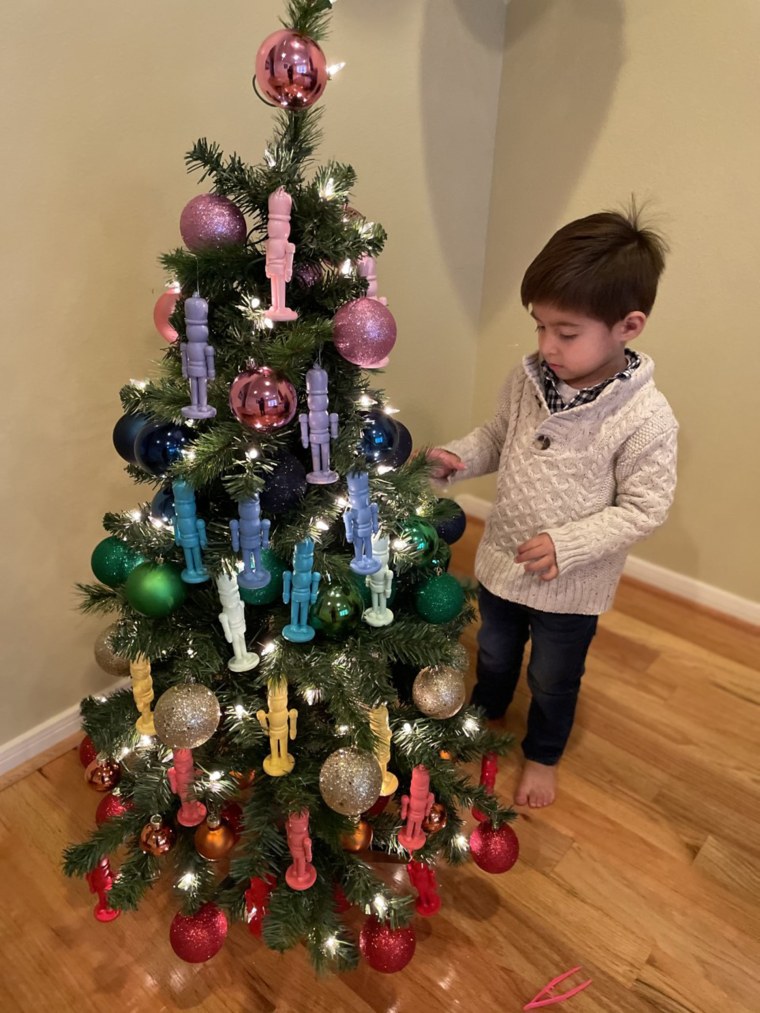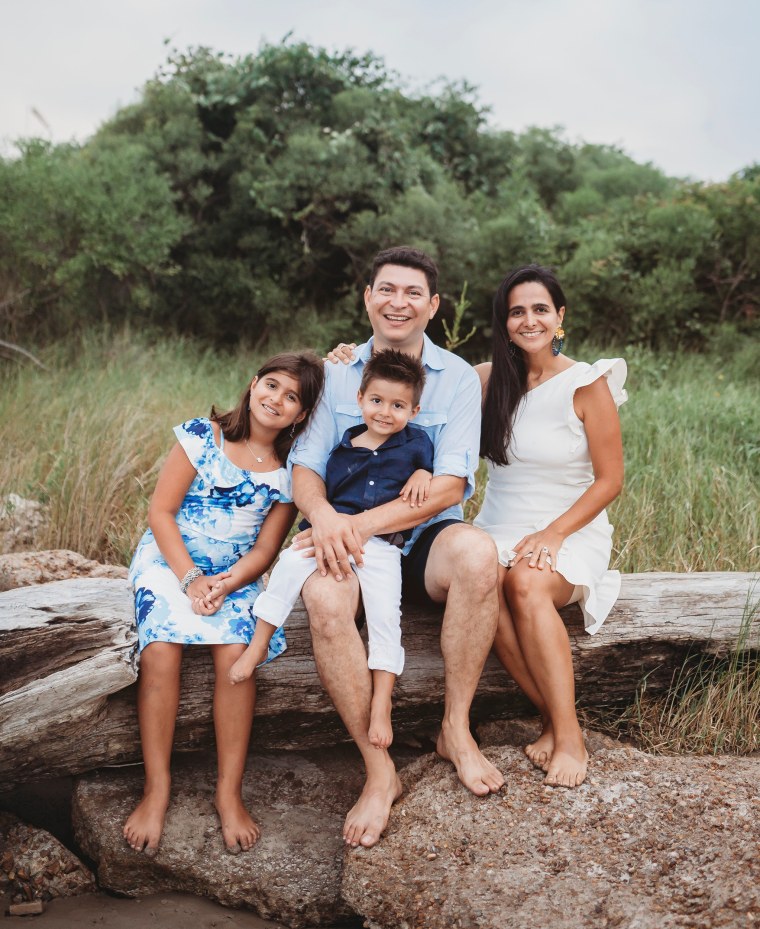The news hit Margarita Saavedra so hard that she fainted in her doctor’s office.
Eighteen weeks into her pregnancy, an ultrasound found the fetus could not survive because of a deadly birth defect. The same imaging test also discovered she had developed placenta accreta, a serious complication that usually leads to a hysterectomy to prevent life-threatening bleeding. If doctors proceeded, she could have no more babies.
“It was so traumatic for me,” Saavedra, 40, who lives in Houston, Texas, told TODAY. “It was just shock.”
Five years later, she still grieves for the baby she lost then. But she rejoices at the birth of Federico, the son she delivered after choosing conservative management — a newer, rarer option to treat placenta accreta that kept her uterus in place.
“In the U.S., it's more often: go straight to hysterectomy and resolve the issue like that … The newer methodology has been more commonly used in European countries,” said Dr. Ramesha Papanna, a maternal-fetal medicine specialist with UT Physicians/UTHealth in Houston, who treated Saavedra.
“She went on to deliver this baby full term and the baby did great.”

What is placenta accreta?
The placenta is an organ that connects the fetus and the mom: It feeds the developing baby, provides oxygen and removes waste.
Normally, it attaches to the uterus during the pregnancy and then detaches and comes out with minimal bleeding after the baby is born, Papanna explained.
But in placenta accreta, the organ attaches itself too deeply into the wall of the uterus. At delivery, it can’t disconnect, causing a woman to potentially lose a lot of blood.
“The blood loss can be quick, very rapid — to the point that there could be a catastrophic complication to the mother,” Papanna said. “Sometimes even death.”
To prevent a hemorrhage, the standard procedure is for doctors to deliver the baby, then remove the placenta with the uterus in a hysterectomy.
Women who have previously had a cesarean section are at higher risk for placenta accreta because the scar tissue left behind can be where the placenta attaches during the next pregnancy, he noted.
As C-sections have risen in the U.S. over the last few decades, so has the number of women with this condition.
The rate of placenta accreta spectrum pregnancies has quadrupled since the 1980s from 1 in 1,250 births to 1 in 272 births, according to the National Accreta Foundation. High-profile patients include Kim Kardashian West.
Saavedra, whose first child was delivered via C-section in 2011, had no signs anything was wrong during her next pregnancy in 2015 — typical of what many women experience. It was discovered only when she happened to go in for an early anatomy ultrasound. That’s when doctors also found her fetus had a brain disorder and could not survive.
'Miracle baby'
The only safe option was to schedule a C-section. The baby died in his mom’s arms five hours after he was born.
But instead of performing a hysterectomy, doctors offered Saavedra the option of conservative management.
In selected patients who are stable during delivery, don’t have bleeding and want to try to have another child in the future, doctors can leave the placenta in place after the baby is born, Papanna said.
Over time, the organ dissolves and fragments of it come out gradually, leaving the uterus behind. The body returns to normal six to eight months after the delivery and patients have a 30% chance of having a successful pregnancy afterward.
The woman must live near a medical center where she can have an emergency transfusion in case bleeding does suddenly happen at any point, Papanna noted.
Saavedra, who fit all criteria, was both excited and anxious when she became pregnant about 15 months later.

“All the time, it’s in the back of your mind: What if this baby is not OK? What if something happens with my pregnancy?” she said. “It was very stressful.”
Doctors closely monitored the location of the placenta and Saavedra prayed it was in the right place. She was lucky the organ was attached far away from the site of the accreta, Papanna said. Only at week 26 was everyone convinced it was a healthy pregnancy.
Federico, who Saavedra calls her “miracle baby,” was born in July 2017. She’s been told she’s the first case of successful conservative management for placenta accreta in Texas.

Saavedra urged women who’ve had a C-section to ask their doctors about the risk of placenta accreta. If they have the condition and are told they must have a hysterectomy, she advised them to ask about conservative management.
It's a shared decision between a woman and her doctor, Papanna said. They key is an accurate diagnosis, the condition of the mom after delivery and continued access to medical care in case there are complications in the weeks that follow.

Saavedra said she feels blessed to have been offered the option by her doctors.
“Without them, my Federico wouldn’t be here,” she said.


